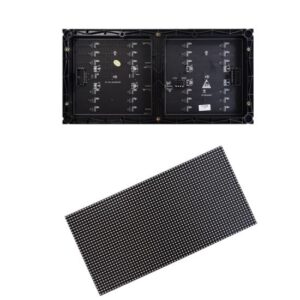Common questions about Ultra LED Display's Services (FAQs)
How to choose LED Model ?
Choice of LED Model depends upon requirement of the site and minimum viewing distance of the board.
What is RGB?
RGB is short for Red, Green, and Blue. It is a color scheme that exploits the fact that all visible colors can be mixed from these three basic colors. It is used in almost all types of displays, including LED displays.
What is Automatic Scheduling?
Automatic Scheduling helps to schedule the content for the LED Display. Through this, we can specify the duration and time for the content to be played.
What is centrally controlled system in LED Display?
Ultra LED Displays can be centrally controlled, which means that if you are using multiple screens, it can be controlled by a single server.
How much warranty do I get in LED Boards and what is covered under the warranty?
We provide two years of warranty for the RGB display and one year warranty for the Mono-color Display and Interactive displays. The warranty covers every hardware and software issues besides the physical damage to the display
What is Video Processor and why do I need it?
A video processor is a device that is used to stream live events directly from the TV, PC, Laptop or camera itself. If we need to show something from these platforms directly to the LED Screen, a Video processor is required; like live sports, live music, news, etc.
How much power does LED Board consume?
The power consumption of LED Display depends upon the size of the LED Display and the content being played.
What are the file formats supported by the LED Display?
Some of the video formats are:
AVI, WMV, MP4, 3GP, ASF, MPG, FLV, F4V, MKV.MOV, DAT, VOB, TRP, TS, WEBM, etc
Some of the image formats are:
BMP, GIF, JPG, PNG, PBM, PGM, PPM, XPM, XBM
How to upload the content on LED Display?
We will be providing you a content management software, through which you can upload and schedule the content to be played on the LED Display. The basic steps are provided below:
Step 1. Confirm the system which is connected on the screen LAN, USB OR WIFI.
Step 2. Connect the system with your PC/ laptop which is available.
Step 3. Open software which is given to your led screen system.
Step 4, log in to the system.
Step 5. Go to the solution list.
Step 6. Click “New”.
Step 7. Click on the file button.
Step 8. Select the content/data from your drive or hard disk.
Step 9. Click on publish button.
Step 10. Select the system which is connected on your pc/laptop.
Step 11. Publish It.
What is Pixel Pitch? Which pixel pitch do I need?
Pixel pitch describes the density of the pixels (LED clusters) on an LED display and correlates with resolution. Sometimes referred to as pitch or dot pitch, the pixel pitch is the distance in millimeters from the center of a pixel to the center of the adjacent pixel.
Since pixel pitch indicates the amount of space between two pixels, a smaller pixel pitch means there is less empty space between pixels. This equates to higher pixel density and improved screen resolution.
Smaller pixel pitch universally provides greater resolution but is more expensive. Materials and production costs are higher for smaller pixel pitches since more LED clusters are required to create a higher pixel density.

